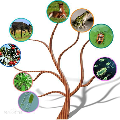Traditionally, network and system administrators are responsible for designing, configuring, and resolving the Internet service requests. Human-driven system configuration and management are proving unsatisfactory due to the recent interest in time-sensitive applications with stringent quality of service (QoS). Aiming to transition from the traditional human-driven to zero-touch service management in the field of networks and computing, intent-driven service management (IDSM) has been proposed as a response to stringent quality of service requirements. In IDSM, users express their service requirements in a declarative manner as intents. IDSM, with the help of closed control-loop operations, perform configurations and deployments, autonomously to meet service request requirements. The result is a faster deployment of Internet services and reduction in configuration errors caused by manual operations, which in turn reduces the service-level agreement (SLA) violations. In the early stages of development, IDSM systems require attention from industry as well as academia. In an attempt to fill the gaps in current research, we conducted a systematic literature review of SLA management in IDSM systems. As an outcome, we have identified four IDSM intent management activities and proposed a taxonomy for each activity. Analysis of all studies and future research directions, are presented in the conclusions.
翻译:传统上,网络和系统管理员负责设计、配置和解决因特网服务要求; 由人驱动的系统配置和管理证明不令人满意,因为最近对具有严格服务质量的具有时间敏感性的应用程序(QOS)感兴趣; 力求从网络和计算领域的传统的由人驱动的服务管理向零触手脚的服务管理过渡,已提议对目标驱动的服务管理(IDSM)作出反应,以满足严格的服务质量要求; 在IDSM中,用户以宣示的方式表示其服务要求,作为意向; IDSM在封闭控制通道操作的帮助下,进行配置和部署,自主地满足服务要求; 结果是更快地部署因特网服务,减少人工操作造成的配置错误,从而减少服务级协议的违规情况; 在早期发展阶段,IDSM系统需要产业和学术界的注意; 为了填补当前研究的空白,我们对SLSM系统的管理进行了系统的系统文献审查。 作为结果,我们查明了4项IDSM意图管理活动,并提出了每项活动的未来研究方向。



